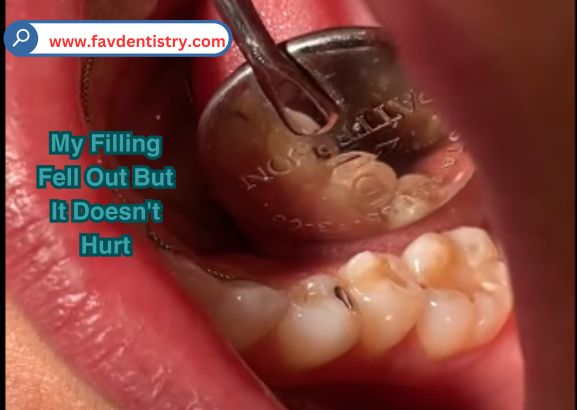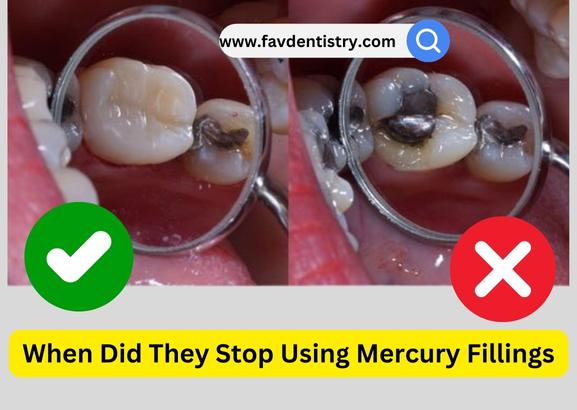Last Updated on 2 weeks by DR. ALBIN SIPES
If your filling fell out and it hurts, it’s important to seek dental attention immediately. Ignoring the pain could lead to further complications or infections.
What Causes A Filling To Fall Out?
Factors such as poor oral hygiene may cause fillings to become loose or fall out. Common reasons for fillings coming loose include decay around the filling, biting down forcefully on hard foods, or tooth grinding. Neglecting regular dental check-ups can also contribute to this issue.
When a filling falls out, it can lead to discomfort and sensitivity, as the tooth becomes exposed to bacteria and food particles. Therefore, it is crucial to seek dental attention promptly to prevent further complications. Dentists may recommend replacing the filling or opting for alternative restorative options to restore the tooth’s function and alleviate pain.
Maintaining good oral hygiene practices and attending regular dental appointments can help prevent fillings from falling out in the first place. Remember, prevention is the key to maintaining oral health and ensuring the longevity of dental restorations.
How To Recognize A Filling That Has Fallen Out
A dislodged filling can be quite painful, and it’s crucial to recognize the signs and symptoms. Common indicators include sensitivity to hot and cold, discomfort while chewing, and a rough or jagged surface on the tooth. Another way to identify a missing or loose filling is by visually inspecting the affected tooth.
Look for a gap or hole where the filling should be. If you suspect that your filling has fallen out, it’s important to address the issue promptly. Leaving the tooth untreated can lead to further decay, infection, or even tooth loss.
Contact your dentist as soon as possible to schedule an appointment and discuss the best course of action for restoring your tooth. Remember, early intervention is key to preventing further complications.
Immediate Care For A Lost Filling
Losing a filling can be painful and stressful, but there are immediate steps you can take to care for it. First, remain calm and gently remove any debris from the area. Rinse your mouth with warm saltwater to reduce bacteria.
Next, use dental wax or temporary filling materials to cover the exposed area, providing temporary relief. While waiting for professional help, avoid chewing on that side of your mouth and stick to soft foods. Be cautious with hot or cold beverages, as sensitivity may occur.
Remember, this is not a permanent solution, so seek dental care as soon as possible to prevent further damage. Taking these precautions will help alleviate discomfort and protect your tooth until you can see a professional.
Relieving Dental Pain From A Fallen Out Filling
Relieving dental pain from a fallen out filling can be addressed using over-the-counter pain relief options. For temporary pain relief at home, there are several remedies available. However, it’s important to know when to seek professional assistance for proper pain management.
It’s advisable to avoid overusing common phrases such as “when it comes to,” “if you,” or “looking. ” Instead, opt for different expressions to engage readers. The writing should be seo friendly, human-like, easy to understand, and free from plagiarism.
The goal is to maintain the reader’s interest throughout the article. Therefore, there won’t be a conclusion paragraph. As an expert seo content writer, i strive to pass ai writing detection while still producing content that reads like it was written by a human.
Preventing Fillings From Falling Out
Maintain good oral hygiene by brushing, flossing, and rinsing regularly to prevent loose fillings. Avoid habits like biting hard objects and grinding your teeth, as they can dislodge fillings. Schedule regular dental check-ups to detect any potential issues early on, preventing fillings from falling out and causing pain.
Don’t delay seeking treatment if you feel any discomfort or notice a filling has come loose. By following these guidelines, you can protect your fillings and minimize the risk of pain and dental complications. Remember, prevention is always better than a painful filling falling out.
So take care of your oral health and keep your fillings intact to enjoy a pain-free smile.
Long-Term Solutions For Replacing Lost Fillings
My filling fell out and it hurts, but there are long-term solutions to replace lost fillings. During a dental visit for a missing filling, you can expect a thorough examination and assessment. The dentist will discuss different replacement options available for your specific case.
These options may include composite fillings, porcelain inlays or onlays, or dental crowns. Each option has its advantages and disadvantages, which the dentist will explain to you. Additionally, proactive measures can be taken to prolong the lifespan of new fillings.
These include practicing good oral hygiene, avoiding excessive pressure on the restored tooth, and maintaining regular dental check-ups. By following these guidelines, you can ensure the longevity and comfort of your new filling. So, don’t hesitate to contact your dentist and find the best solution for your missing filling.
Frequently Asked Questions On My Filling Fell Out And It Hurts
Can A Filling Falling Out Cause Pain?
Yes, when a filling falls out, it can cause pain because it exposes the sensitive inner layers of the tooth to hot, cold, and pressure. It’s important to visit a dentist promptly to have the filling replaced and address any underlying issues.
What Should I Do If My Filling Falls Out?
If your filling falls out, rinse the area with warm water and try to save the filling if possible. Contact your dentist as soon as possible to schedule an appointment for a replacement. In the meantime, you can use temporary dental cement to cover the exposed area and minimize discomfort.
Why Did My Filling Fall Out?
Fillings can fall out due to various reasons, including tooth decay, tooth grinding, trauma, and worn-out fillings. Poor oral hygiene and consuming certain foods and drinks can also contribute to filling failure. It’s essential to visit your dentist regularly for check-ups to prevent fillings from falling out.
Conclusion
Experiencing a filling falling out can be a painful and distressing situation that requires immediate attention. Ignoring the problem can lead to further complications and increased discomfort. Taking proactive steps such as contacting your dentist, explaining the situation, and scheduling an appointment can help alleviate the pain and prevent any potential dental issues from worsening.
It’s also essential to maintain good oral hygiene by brushing and flossing regularly and avoiding sticky or hard foods that can put stress on your teeth. Remember, prevention is key, so don’t delay in seeking professional help to address any dental concerns promptly.
By doing so, you can restore your oral health, relieve the pain, and prevent any future problems. Your smile is worth the effort!




